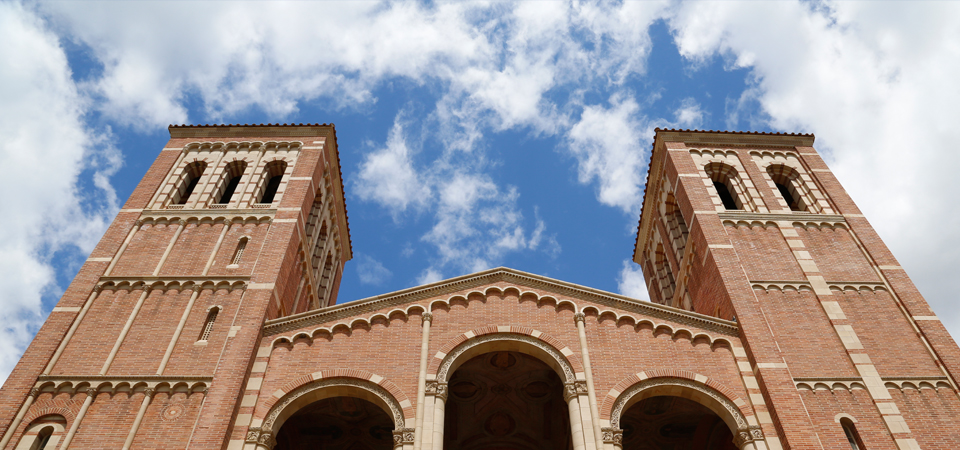
This year, wildfires in California have burned a record 4.2 million acres, damaged or destroyed over 10,000 structures and killed 35 people — and the season hasn’t even concluded.
The situation has become increasingly dire, with six of the top 20 wildfires in state history taking place this year, including the largest wildfire on record. California’s top wildfire and climate researchers are responding to this incredible challenge, but they are also realizing there is a need to take a more collaborative, holistic and proactive approach to their work.
“In my mind we’ve clearly joined the other two prominent communities — Midwesterners who have tornados, and people in the Southeast who cope with hurricanes — when our state is on high alert and our residents truly fear what the wildfire season will bring in any given year. Climate change has certainly contributed to this increase, and there are other factors at play, as you will hear today,” UCLA Vice Chancellor for Research Roger Wakimoto said to the virtual attendees of the UCLA-hosted “How to Predict and Manage California’s Fire Risk in a Changing Climate” webinar that took place Dec 4. Attendees included local, state, and federal legislative staff, government agency officials, academia and the nonprofit community.
The event brought together experts from numerous scientific disciplines at University of California institutions, along with researchers from neighboring universities. They make up an informal statewide climate and wildfire collaborative formed this year to identify what could be accomplished when working together and leveraging efforts.
The researchers’ goal is to work in close partnership with California policymakers and the many others who were in attendance. This coordinated effort goes well beyond wildfire modeling. Experts are ready to examine insurance and financial risk management, air quality, victim compensation, human health, energy infrastructure and many other topics — along with ensuring that policies do not disproportionately impact communities who are already disadvantaged.
“We’ve come together with a shared sense of alarm and urgency,” said Alex Hall, UCLA atmospheric and oceanic sciences professor and director of the Center for Climate Science. “California is at a critical juncture with its relationship to wildfire, and as scientists we have a moral obligation to help.”
Hall gave an overview of eight of the largest multi-institutional projects spanning the past several years. Topics include prescribed fire, fire behavior models, carbon and forest management, air quality impacts, grid resilience, wildfire spread and predication, and more. “These projects have tremendous value, but each has its own limitations and critically they are not the result of a larger research strategy around wildfire and climate change,” he added.
The infrastructure to provide useful information to those outside of the research community is still being built, and is itself under-resourced, said Lara Kueppers, UC Berkeley associate professor of energy and resources group and scientist in the Lawrence Berkeley National Laboratory. This organization is paramount to overcome operational challenges that impede government officials from accessing valuable data to inform their policymaking. “While these gaps are significant, California’s research community is motivated and has the skillsets to meet these challenges. We breathe the same air, we evacuate our homes when they are at risk, and we worry about the future of our communities and landscapes just as every other Californian does.”
With this renewed effort to share and work together across the state, researchers say now is an important time for increased investment in the effort to realize tangible mitigation. For an example of how well that could work, Wakimoto said to look no further than the COVID-19 pandemic, which has achieved significant research milestones in only a short amount of time through large and coordinated scientific engagement rarely seen. “We’ve shown in a crisis what open data and making it readily available has done,” Wakimoto added. The experts agreed when it was put this way during the Q&A session: Collaborative science is better than competitive science. And now, it is necessary.
For the complete webinar, including an hour Q&A session, please see the video below, along with a list of vital climate change resources.
GENERAL CLIMATE CHANGE RESOURCES
- IPCC Summary for Policymakers of the Special Report on Global Warming of 1.5°C (SR15)
- 4th Statewide California Climate Assessment
- 4th California Climate Assessment Regional Reports
- OurCounty Sustainability Plan
- LA’s Green New Deal Sustainability Plan
- Resilience LA Plan
- LA County Climate Vulnerability Assessment (under development)
CLIMATE CHANGE/WILDFIRE RESOURCES
- Wildfire and Climate Change, Center for Climate and Energy Solutions
- The science connecting wildfires to climate change, National Geographic
- Infographic: Wildfires and Climate Change, Union of Concerned Scientists
- Wildfires and climate change: What’s the connection?, Yale Climate Connections
- Climate Change Is Central to California’s Wildfires, Scientific American
- Explainer: How climate change is affecting wildfires around the world, Carbon Brief


